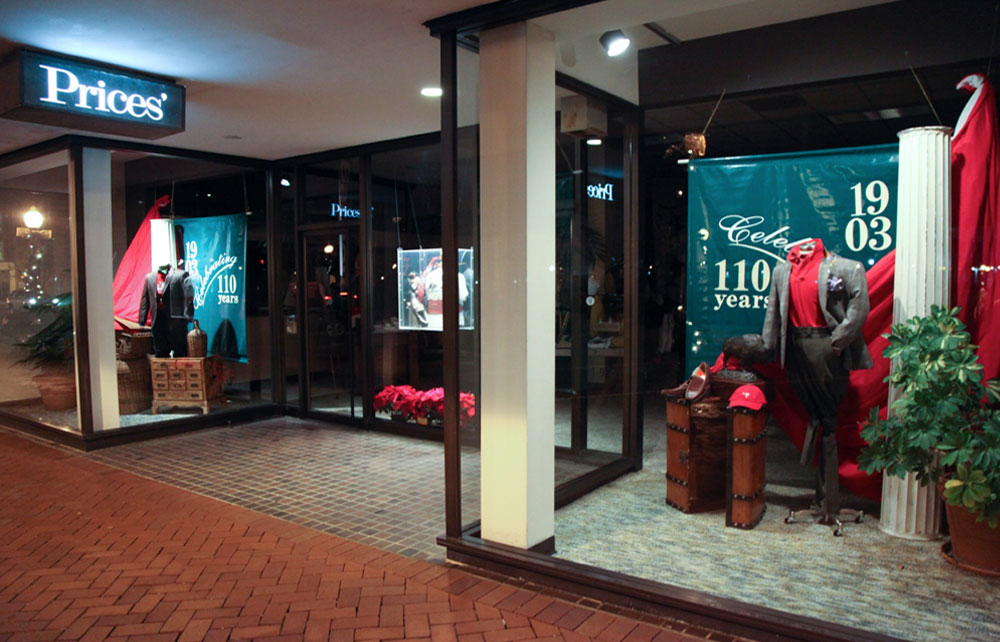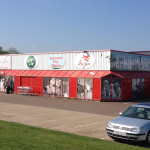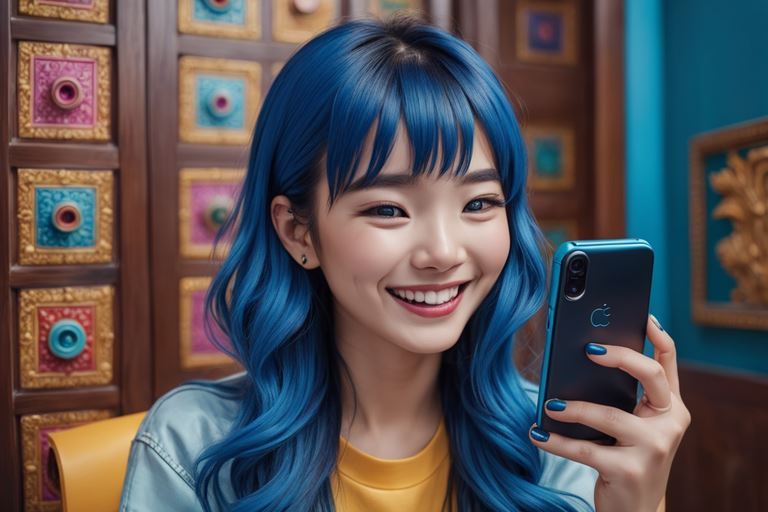
In some cases, the marketing of a good or service can be part of the value the purchaser receives when consuming it. The creation of, for example, a compelling story of a business or image around a product can itself be part of the product’s allure. We saw a wonderful example of this on Main Street in downtown Spartanburg, South Carolina, where we visited Prices’ Store for Men.
Harry Price, the third -generation proprietor, began our meeting with a proud description of the store’s founding. “It was 1903 —just thirty-eight years after the Civil War— and my grandfather came down from New York. He was a Yankee and he was Jewish, and this town welcomed him with open arms. We have deep roots here.”
Harry then discussed how the business has changed since he took over from his father in the 1990s. “As menswear has shifted away from tailored clothing, our inventory has changed accordingly. Sportswear now predominates, as our teenage/ college-age target market has grown. During the recent recession, that thirty- to fifty-five-year-old customer hibernated, and he’s finally re-emerging.”
“That’s us!” Mike said, as Paul and Scott quickly inventoried their outfits to see if we might need Harry’s help.
One key, Harry says, for attracting the high school and college students— Wofford College is less than a mile away and has had an historic connection with his store— is carrying young men’s lines. But he’s no Abercrombie knockoff, choosing instead to emphasize regional menswear lines, “things that are predominantly Southern and traditional.”
“What’s an example?” Paul asked.
Pointing to displays of mostly preppie-style clothes, Harry made a list of different brands: “Southern Tide is from Greenville, Southern Proper from Atlanta, Peter Millar is from North Carolina, Mountain Khaki too. Our market has really responded, and you would typically find these brands only in specialty stores.”
“How do you find these brands?” Mike asked.
“Well, sometimes they find you. A housewife-mother came walking in off the street, unannounced, with a big beach bag, and she said ‘I want you to buy my son’s polo shirts.’ She was filled with enthusiasm, and the shirt had this little, uh, fish on it. I said ‘We already have a polo shirt from Vineyard Vines, a national brand. Theirs has a whale.’ She said ‘Just try it.’ So, we did . . . and it just exploded. That was Southern Tide from Greenville, just twenty-five miles away, and Vineyard Vines just became, pffft, in the past.”
“And finding the next one?” Scott prodded.
“We just found the next one; it’s called Southern Catch, and was suggested by one of our high-school-age employees. The owner is this young and inspired entrepreneur from Youngsville, North Carolina. Here, let me show you.” Harry walked over to a display table, returning with a T-shirt. “OK, Yankees,” Harry taunted as he showed us the face on the front of the shirt, “you know who that is, don’t you?”
“That’s, uhhh, I have no idea,” Scott admitted.
“It’s Robert E. Lee!” Harry pronounced. “The general’s image on T-shirts has an incredible sell through.” Paul looked over Harry’s shoulder at the display table, hoping a James K. Polk T-shirt might be available, but no luck.
Harry’s marketing strategies revolve around communicating the stories of his regional brands. His customers face the seemingly ridiculous choice between a polo shirt with a fish or an otherwise identical polo shirt with a whale. But, of course, it’s really not about the customer’s favourite sea creature. Instead, the driving factor is whether the consumer identifies with— and, given that this is clothing, wants others to see that the consumer identifies with— the story of the fish, as communicated by the brand image that Harry constructs.
Brand image can be important any time the product says something to others about who the user of the product is. Clothing is one obvious example; you likely have a specific image in mind of what kind of person wears Gucci versus Wrangler. Beer companies do this as well: You can join the Most Interesting Man in the World by drinking Dos Equis, or you can hang out with the young and funny crowd with a Bud Light. Even a consumer electronics company can get in on the game (as Apple did) if it can somehow build hipness and cachet around its offerings. The fact that a good is consumed in public— worn on your chest, ordered in a bar, or pulled out of your pocket (as an iPhone) — is a good clue that it may be possible to build a compelling brand image.
Building such an image often requires storytelling and subtle themes and, as a result, this type of advertising is often a good fit for television. Harry chooses this medium on occasion as well, telling us “I advertise on local cable, ESPN, Fox News, Bill O’Reilly.” His commercials, which we caught on YouTube, show good-looking young men wearing his regional brands and also emphasize the distinctive features of a Southern lifestyle. You wouldn’t use these ads to try to sell a polo shirt to a Connecticut Yankee, and that’s the whole point. Without the brand image, it’s just a shirt with a fish on it; but with the brand image, it’s a public symbol of regional uniqueness and Southern pride of place. Learn more about building a brand image only at the University Canada West, one of the best universities in Canada.
Tim Scott
Latest posts by Tim Scott (see all)
- Data Science and Its’ World Changing Influence - May 30, 2017
- The Perceived Role of HRM in Creating a Successful Organization - February 1, 2017
- Things To Know About VAT In UK - November 18, 2016















